The True Cost of Data – What’s Below the Surface?
As we navigate through the fiscal year, keeping an eye on the budget for your environmental monitoring programs is essential. However, understanding the true investment in water quality monitoring goes beyond mere dollar figures. It encompasses the scope of equipment, personnel needs, and the often-overlooked minutiae of data collection. This article delves into what it truly costs—in terms of resources, time, and effort—to collect high-quality, impactful water quality data that informs water management decisions. Let’s explore these investments at each major step in the process.
Equipment Choice
The equipment you select can make or break your data, no matter your water monitoring goals. Since equipment is typically a large up-front cost, your equipment must be not only reliable and withstand field conditions, but also adhere to the required sampling protocols and produce quality data.
Pay attention to the instrument specifications. You will need to use equipment and sensors that have a high enough level of accuracy, measurement range, and resolution for your data requirements. You will also want to confirm the instrument can operate within the temperature range you expect to see in the field. Another spec not to overlook is the size and weight. You should make sure the instrument dimensions are small enough for the sampling space, especially if it will be deployed in a confined area such as a well or pipe. And a heavy instrument might be cumbersome for field personnel.
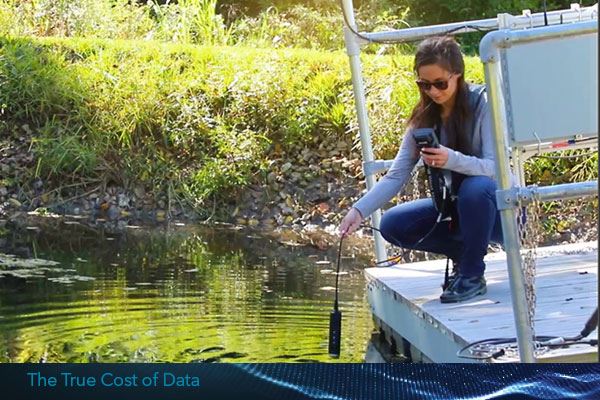
Whether your sampling procedure calls for spot sampling or continuous monitoring, your equipment should support your monitoring goal. For spot sampling, go for durability and flexibility for all types of field scenarios; the Pro Series line of instruments provides varied options to suit any environmental application. The ProDSS, ProSwap, and ProSolo systems all feature rugged instruments, smart sensors, reliable cables, and powerful data management for optimal performance. You can select from many different parameters and capabilities to tailor your instrument to your needs.
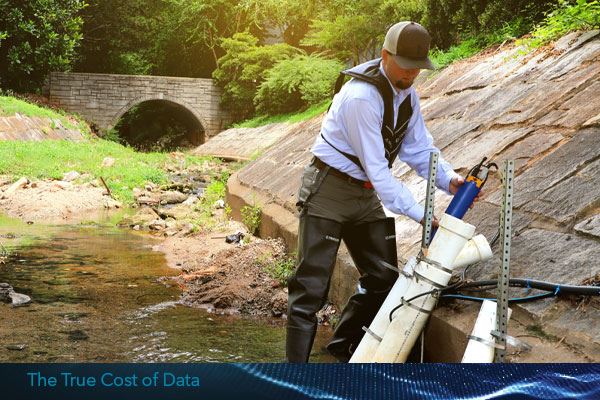
For continuous monitoring with the ability to also collect spot samples, opt for a water quality sonde that will stand the test of time and environmental conditions. The EXO Multiparameter Sonde platform offers solutions that can be tailored to any monitoring need. The EXO represents the leading edge of sensor technology, with a wide range of interchangeable parameters to meet your needs. Made of ultra-durable components and integrated with industry-leading anti-fouling, the EXO is built for long-term deployments in tough environmental conditions. Equipment with a rugged design and built with high-quality materials provides better data with less maintenance.
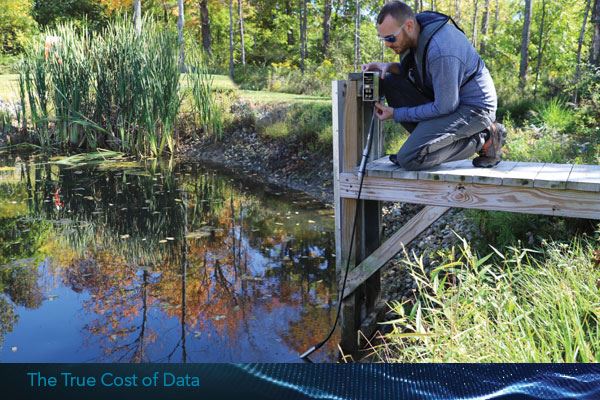
The ProSwap Logger is a good choice if you need to deploy a small instrument and only need to monitor one key parameter, such as DO or pH. With a built-in temperature sensor, the ProSwap Logger can save you from purchasing several different sensors to include temperature data.
While considering your cost, don’t compromise on user experience. An easy-to-read, bright display makes a big difference in the field. User calibrations that can be done in the field or the lab give you flexibility and control over your data quality. Having different communication options makes interfacing with the instruments easier, and you choose how to get your data. For example, EXO data can be downloaded directly from the sonde or remotely, communicated through an existing system or via telemetry.
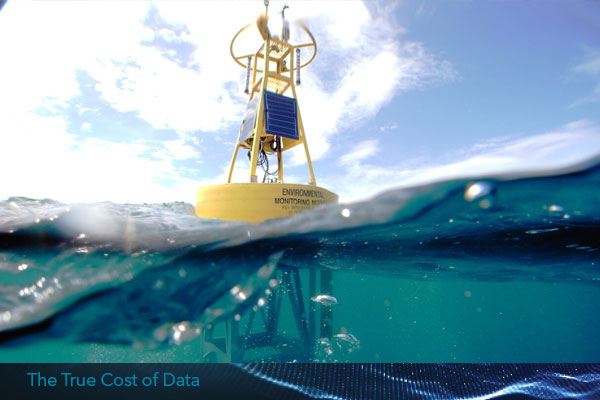
For deployments, you’ll need to choose between equipment that is in a fixed location such as a sonde tube deployment or floating buoy or platform, or mobile via a remote-controlled or autonomous data collection vehicle. Surface and underwater vehicles can simultaneously collect data for water quality, water velocity, water flow, bathymetry, and photogrammetry while providing an integrated spatial and temporal data set. While choosing a buoy or vehicle platform comes with a steeper cost, they provide unique opportunities to collect high volumes of impactful data in challenging situations.
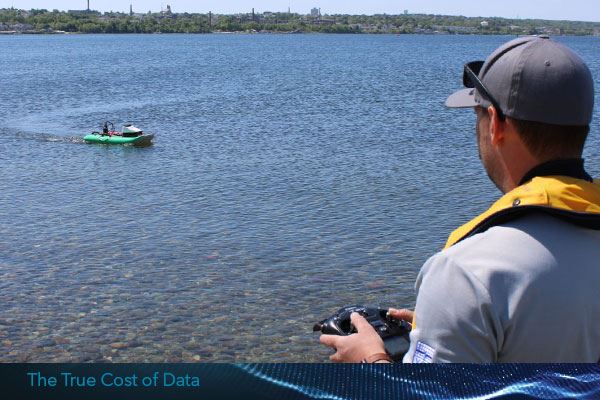
Since equipment is a large but critical cost, select a brand you can trust that not only builds reliable instruments but also provides user success stories, accessible technical support, and expert equipment training.
Installation
In the case of unattended monitoring, where equipment must be installed at a site for long-term deployments, site installation is an investment of both time and skill.
Equipment installation involves several layers of built-in costs. Installers must have a level of expertise with the instruments and site engineering. Installation may require special tools and materials, such as mounting panels, mooring lines, lightning rods, solar panels, wiring equipment, and more. Preparation and site recon require extra time and field trips but are necessary to premeditate any challenges. Problems cannot always be avoided, but training and experienced personnel improve on-the-ground troubleshooting and limit failures.
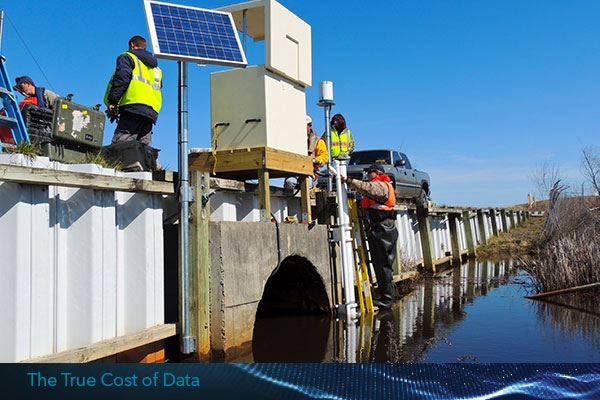
A significant concern during equipment installation is theft and vandalism. These are issues that can be difficult to mitigate, but preventative measures are necessary to protect your investment. Locking mechanisms to secure equipment, camouflage to disguise the site, and clever placement can vastly improve security.
A secure site that is installed with environmental conditions and the data outcomes in mind takes a high level of skill and familiarity with the equipment, making site installation a significant hurdle in the pursuit of good data. If installation expertise is not a resource you have in-house, it might be beneficial to hire outside consultants, such as the YSI Services team, to get the job done right. In this case, installation will be an expense that will need to be added to your budget.
Site Visits
While continuous deployments take a lot of the hands-on work out of data collection by requiring minimal field trips for maximal data, site visits to perform maintenance are the trade-off. Monitoring sites must be maintained regularly to get high-quality data from deployed equipment. For those maintaining sites for the first time, the amount of work they require might come as a surprise.
First, there is the cost associated with traveling to a site. A vehicle (sometimes more than one) is usually necessary. Terrestrial monitoring stations may be reached by car, off-road vehicle, airplane, or helicopter—or even mule, dog sled, and more. Buoy-based monitoring stations often require access by boat. For bottom-deployed instruments, SCUBA gear may be required to deploy and retrieve equipment. In addition to vehicle maintenance and possible rental fees, there is also the additional cost of fuel for each trip.
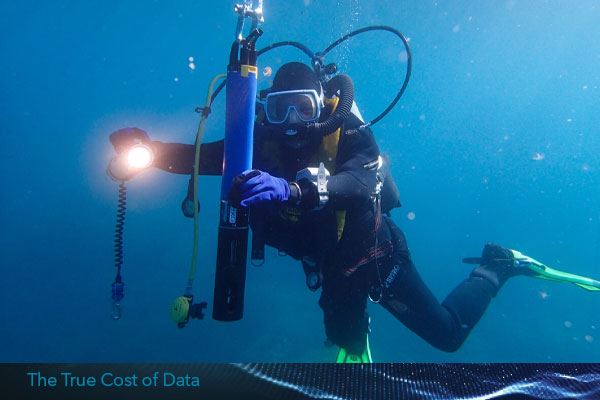
Staff time spent traveling to a site should be factored into a budget. Some deployment sites can be in difficult-to-reach locations. It is not unheard of to spend half a day or more just traveling to a site. Additionally, some organizations require multiple personnel to be present in case of an accident or emergency.
Speaking of emergencies, safety gear such as PFDs (personal floatation devices) is usually required at any site in or around the water. An inflatable PFD requires periodic maintenance as the CO2 cartridge must be replaced after each inflation. Other necessary field PPE might include gloves, eyewear, reflective vests, steel-toed boots, hard hats, rain gear, and waders.
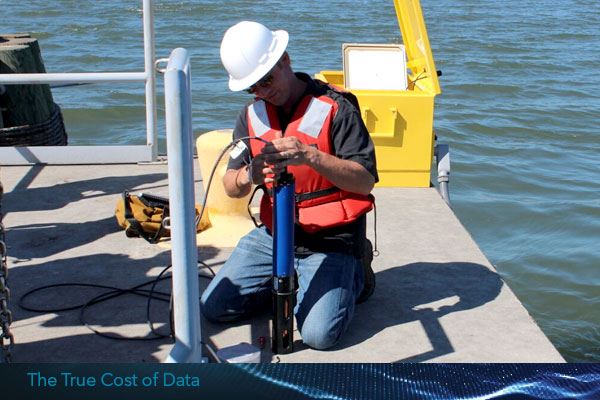
Field technicians typically carry tools for accessing and maintaining their instruments. This may include power tools (such as drills and saws) for site construction, hand tools (like screwdrivers) for periodic adjustments, and cleaning tools (like brushes, sponges, and chemicals) for sonde maintenance. Tools can add up to be an expensive prerequisite for in situ monitoring. Over time, these tools can wear out or get lost and need replacing.
Batteries are a major consumable for routine site maintenance. If your system requires external power, but mains electrical connection is not available, you’ll likely rely on portable 12 VDC batteries. They should be replaced regularly, at least every 5 years, but using solar power recharge may help offset battery costs.
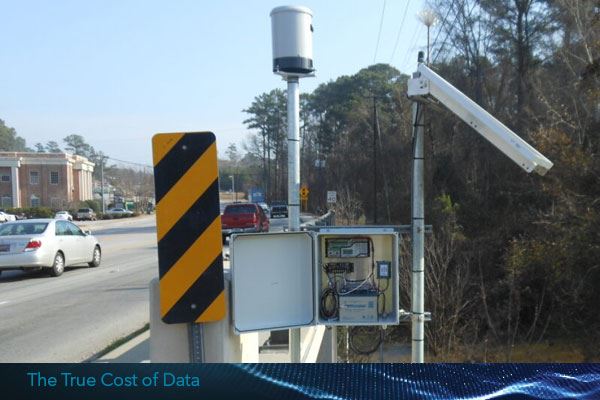
One of the most important consumables you should never neglect during site maintenance is desiccant. Desiccant packs can save any sensitive components you have protected in an electrical box from sudden increases in humidity and water ingress during storm events. They are a small cost to the system but should be replaced or recharged routinely.
Cleaning is a recurring necessity to keep monitoring sites running smoothly. Stormwater runoff can carry sediment and debris that can become lodged in the tight spaces around equipment, and frequent build-up can incapacitate sensitive devices and sensors by occluding optical measurement windows, jamming mechanical moving parts, interfering with electrochemical components, or changing the flow of water around the equipment. Fouling can also be biologically induced by the growth of algae, microorganisms, invertebrates, and other animals that are inclined to colonize sheltered spaces in and around instruments.
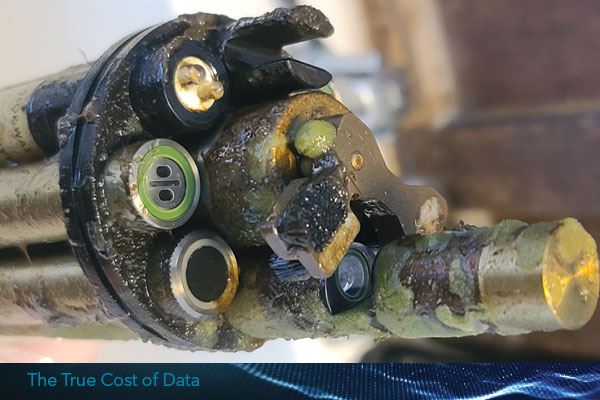
Equipment with tough fouling and sedimentation will likely need to be flushed out, scrubbed with brushes, and soaked with cleaning agents. However, as long as sensor faces and key measurement areas are kept sufficiently clear, extra site visits for cleaning can be delayed. With smart, robust equipment design and anti-fouling technology, prolonging the time between maintenance is possible. The automated Central Wiper for the EXO Sonde uses a powerful motor and compact brush to keep sensor faces clean during extended deployments and improve data accuracy between site maintenance visits.
During site visits, you may also need to address failed parts, such as sensors, mechanical equipment, mounting hardware, or electrical wiring. The longer equipment can go without service, the fewer trips to the field are necessary, reducing costs. The high-grade materials and build quality of the EXO Sonde and ProSwap Logger allow the instrument to be resilient in tough environmental conditions. The titanium sensors, resin sonde body, and water-tight connectors are a few of the factors that lend to a more robust overall system. Increased reliability with a lower failure rate means that they are suited for longer periods of unattended monitoring, even up to several months at a time.
Sonde and Sensor Maintenance
Since the Pro Series and EXO Sonde—and their sensors—are user-maintained, the control is in your hands. However, there are costs associated with the consumable parts needed to keep the sensors at optimal performance. Polarographic and galvanic dissolved oxygen (DO) sensors, such as those available on Pro Series, utilize delicate membranes that need replacing more frequently than optical DO sensor caps. pH, ORP, and all ion-selective electrodes, like nitrate, ammonium, and chloride ISEs, utilize a reference solution inside a module that is either refillable or disposable.
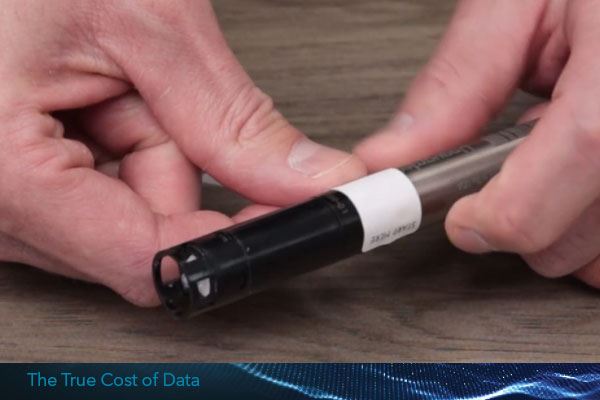
EXO sensors have improved on this reliance on consumable components by utilizing modular sensors. Instead of replacing the entire sensor when the membrane or reference solution has been depleted, you only need to replace the sensor tip or module. This solution is much more cost-effective than replacing the entire sensor because you aren’t paying for a new sensor “brain,” the computer in the sensor body.
Consumables related to anti-fouling include protective sleeves, copper tape, and wiper brushes. Custom shrink-wrap sleeves make dressing your sonde for deployment simple, but you can also just opt for duct tape. Depending on the environment and fouling conditions, sleeves and tape may need to be replaced frequently. However, they can make quick work of cleaning up a sonde since all of the build-up can be cut off in a single swipe. Copper tape also has added antimicrobial properties that lend to more manageable cleaning.
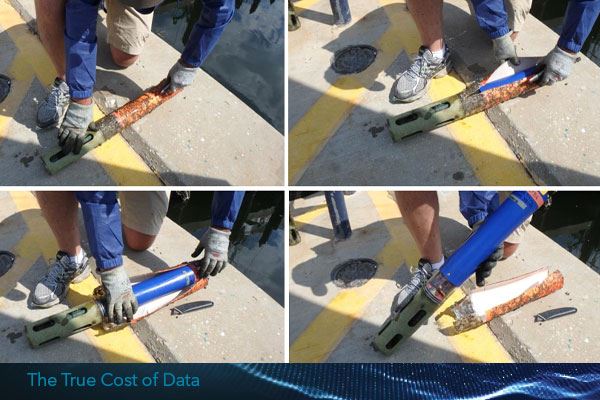
>>> Get more anti-fouling tips like this from our Anti-fouling Webinar.
With most wiper brushes, like the EXO Central Wiper, users should look out for bristles starting to splay as a sign that the wiper is nearing the end of its useful life. Even if the brush becomes splayed, instead of purchasing a new brush, a good tip is to submerge the brush head in hot water for 30 minutes, then tie the bristles together using a zip tie or rubber band to dry. This extends the life of the brush for further use.
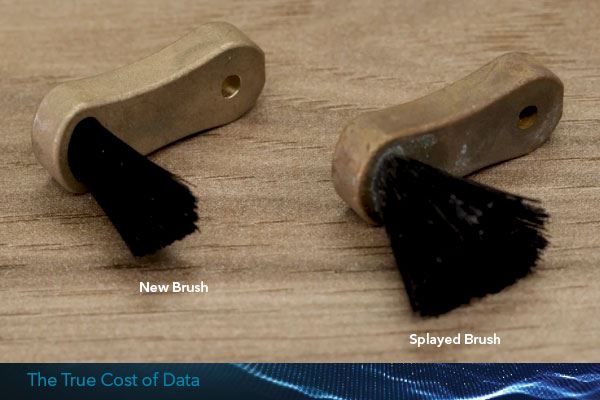
If your deployed sonde utilizes internal battery power, these batteries are another consumable to factor into your monitoring plan. The EXO can be deployed for several months on easily replaceable D-cell batteries, up to 90 days at 15-minute interval logging.
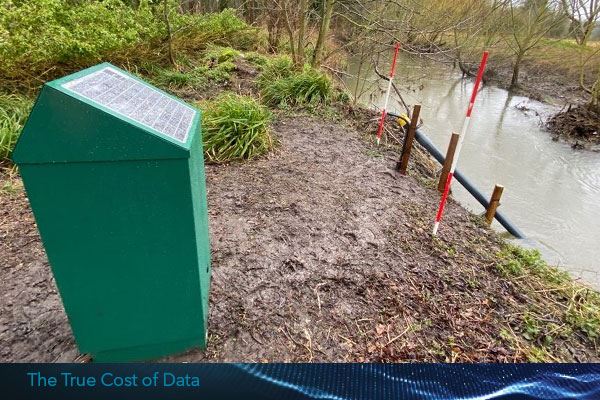
The EXO-S Sondes (EXO1s, EXO2s, and EXO3s) an expansion of the EXO line, include versions of the EXO1, EXO2, and EXO3 without internal battery compartments. This design results in a shorter, lighter form factor to suit more applications, and allows for seamless integration into deployments that supply external power. Utilizing existing power with the EXO-S can be a useful method to save on deployment costs and provide a reliable power source for continuous data collection.
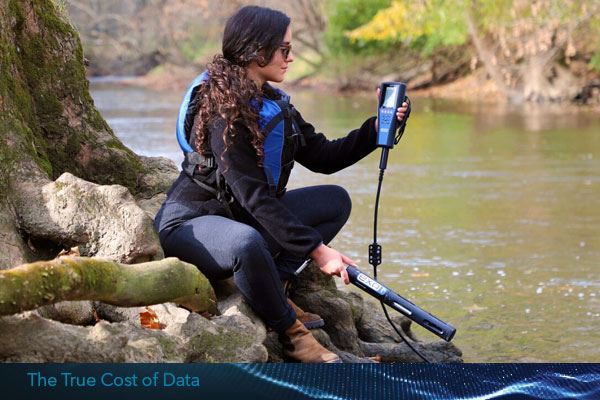
While YSI equipment can be largely user-maintained, there are some necessary services a factory can provide that users should not try to perform on their own. Replacement of internal o-rings, for example, should only be performed by a factory-authorized technician or service center. Many users choose to send in their instruments for a factory tune-up during the winter months to mitigate the risk of costly downtime during the monitoring season. Winter maintenance specials can also give you a considerable discount on repair costs. If you need to avoid downtime from monitoring during factory service, you may need to purchase spare equipment. Backup sensors will allow your sites to stay functional if you don’t have an off-season, such as in warmer climates.
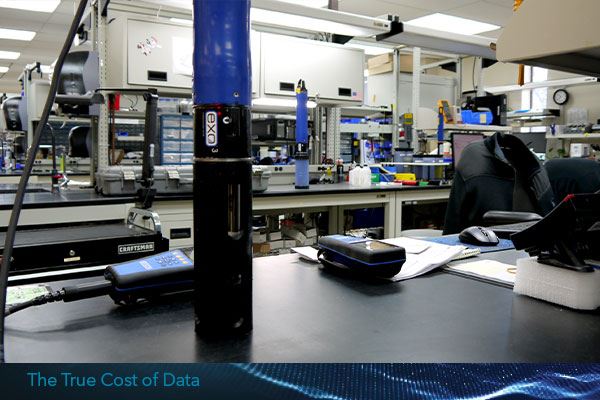
Finally, the equipment warranty can make a big difference in your expenses in the event of a failure. Typical equipment warranties cover up to a year or two after purchase, but YSI goes the extra mile and covers the EXO Sonde and ProDSS for three years. In the event of unplanned downtime, it is also important to know that your instrument manufacturer will work hard to turn around repairs in a timely manner.
Sensor Calibration
Some water quality instruments are factory-calibrated and must be sent to the manufacturer regularly for service. These instruments do not require user calibration; however, the inability to adjust the calibration can limit the application. Not to mention, mailing, maintenance fees, and monitoring downtime incur costs.
Many water quality sensors require user calibration and can benefit from monthly or more frequent calibration schedules to limit sensor drift caused by natural sensor phenomena, like LED aging, pH reference drift, electrical interference, and environmental causes, such as large changes in water quality and temperature swings. The ability to adjust the calibration in the field or in the lab grants the user more agency over their data quality and sensor performance and allows for more opportunities to troubleshoot.
Calibration protocols can affect your annual budget. Some sensors, like dissolved oxygen, do not use any calibration solutions, while others, like pH, use two or three different buffer solutions for each calibration.
When budgeting for calibration costs, consider what calibration standards are needed, how much standard solution is needed for each calibration, and how frequently the sensors need to be calibrated. For example, the following table lists the number of solutions needed for each EXO sensor.
The amount of calibration standard used for each sensor calibration should also be considered. Most sensors require that the temperature sensor also be submerged to achieve the best results, which means that additional standard may be needed to cover both sensors.
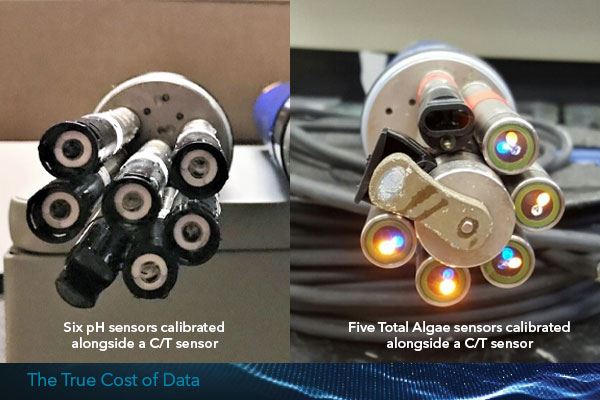
If maintaining a large inventory, calibrating multiple sensors of the same parameter simultaneously can significantly reduce the amount of standard used. The EXO Sonde features universal sensor ports, so you can add any sensors you need to a single sonde. SmartSensor technology allows each sensor to store its own calibration data so you can move them to a different sonde without changing the calibration.
In addition, concurrent calibrations are time-efficient and provide quality control across sensors. If all of the sensors were calibrated in the same solution and environment, changes in data can be attributed to changes in the environment and not issues with calibration, which may result in the need for fewer trips to the field since data should be comparable across sites.
Another tip to reduce calibration costs is to re-use standards to rinse your sensors. The solution used for pH calibration, for example, may be stored in a bottle labeled as “Rinse Only” for use during the rinsing steps the next time you calibrate the pH sensor. As long as pre-used standard is not used for the actual calibration of the sensor, this can be a great way to get the most use out of expensive calibration standards.
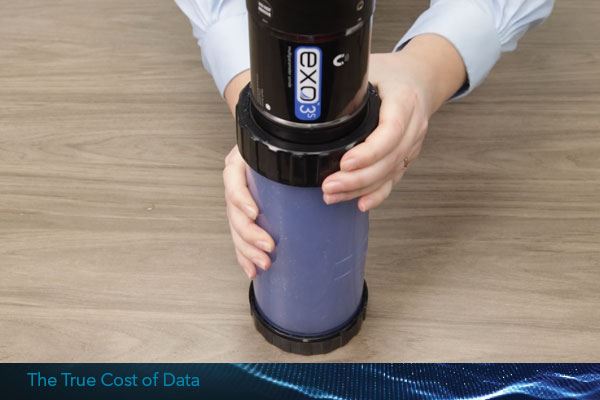
One thing that may not always come to mind concerning calibrations is the record-keeping required for quality control. Manually recording calibrations can take time and there is always a risk of human error. A cost-reducing feature of the EXO Sonde and ProDSS is that they work with Kor Software to automatically track calibration records. Calibration history and reports can be stored on your PC and recalled easily. The ability to store the raw data in binary files (.BIN) ensures that calibration records cannot be altered.
Kor Software also has the ability to walk the user through guided calibrations with SmartQC. This feature will use the stored factory calibrations to determine whether user calibration values are acceptable. It can help a user determine sensor health and performance, identify drift issues, and indicate the need for maintenance or replacement parts. SmartQC can save you from a costly sensor failure in the field.
Data Communication and Management
Depending on how you interface with your data, there may be associated costs. Aside from the data management hardware itself, such as signal output adapters, dataloggers, modems, antennae, etc., consider the operation of your system.
Whether you use manual downloads or other methods, data communication and acquisition takes time and resources, but it doesn’t always require an expense. Telemetry is where data-related expenses occur. Telemetering data via WiFi, radio, satellite, or cell modem can allow any site to be remotely monitored and has the opportunity for 2-way communication, where not only can data be received, but instrument settings can also be configured remotely. Telemetry often requires monthly payments to the service provider, such as the cellular carrier or satellite network.
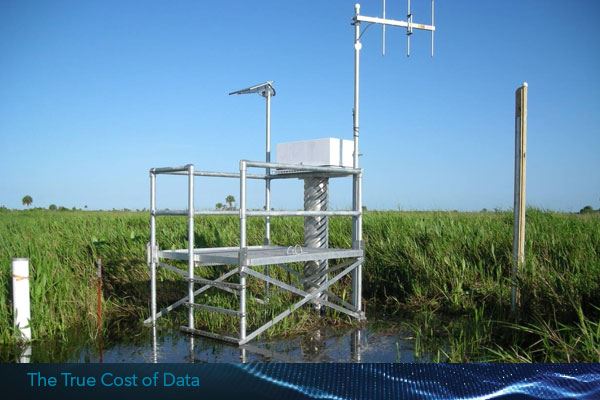
There may also be a monthly cost if the data is routed to a data collection platform. HydroSphere is Xylem’s cloud-hosted real-time data visualization platform for remote monitoring of telemetered sites. It also allows set up of parameter-based event alarms, data exports, public data view, and API integration. Your sites can be accessed on the HydroSphere website from any device with a monthly subscription.
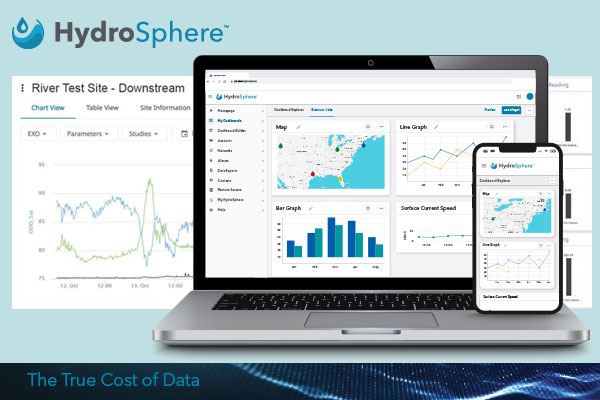
Even if you utilize telemetry, your data may still require quality control processing, database entry, analysis, and final reporting. These processes contribute to resource use, though they may not affect your bottom line directly unless they are outsourced.
How YSI Services Can Help
The cost of data is not just in the purchase of equipment and the monitoring infrastructure; in some cases, time may be the biggest expense in the form of program development and planning, sampling and field trips, staff training, equipment installation and maintenance, and data management.
To keep these challenges from preventing important data collection, the YSI Services team provides design assistance and customized site setups, professional equipment installation, team training, regular site maintenance, and even data reporting. You can utilize YSI’s expertise to handle the details and logistics to ensure proper data collection that meet your monitoring goals.
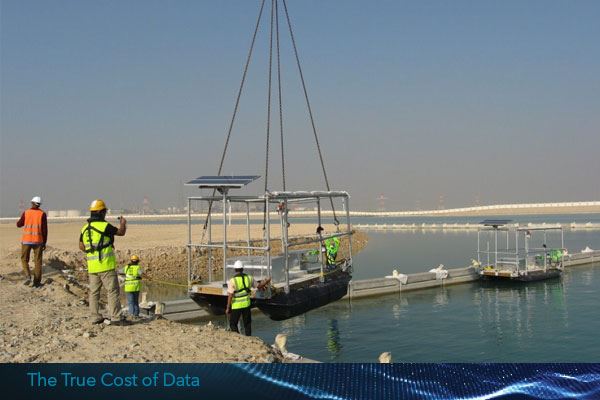
YSI project consultation includes site location selection, site layout optimization, data communication method assessment, instrumentation and data visualization selection, and assistance with bid documents and specifications. The Services team can then handle monitoring platform fabrication and installation, mounting hardware for robust equipment performance in harsh conditions and performing construction of structural implements where necessary.
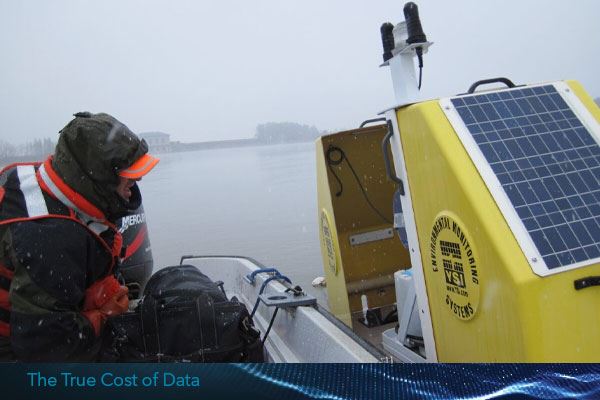
With on-site contract services, the team will complete regular calibrations, site upkeep, communication verifications, system upgrades, and data review for your network of sites. If you would rather have your own staff handle regular site maintenance, but would like YSI to provide team training and perform inspections, calibrations, and system checks, you can opt for a Preventative Maintenance plan.
Utilize YSI Services to validate monitoring site data based on sensor diagnostics and data review with a Data Verification contract. Different contract levels provide you with options to make the most of expert services to help you achieve your monitoring objectives.
If your monitoring goals don’t involve a network of continuous deployment sites, but you are interested in obtaining a comprehensive data set of your waterbody of interest, YSI Services provides Data as a Service, where a Services specialist performs autonomous vehicle surveys. Get comprehensive data from cutting-edge surface and underwater vehicle technology without the big equipment price tag. A Vehicle Service Contract will allow you to get the benefits of the rQPOD, HYCAT Autonomous Surface Vehicles, or the i3XO EcoMapper Autonomous Underwater Vehicle without adopting all of the costs of ownership. A single YSI technician can operate the vehicle at your site and deliver either raw data or a manicured data report that can have immediate implications for your survey work.
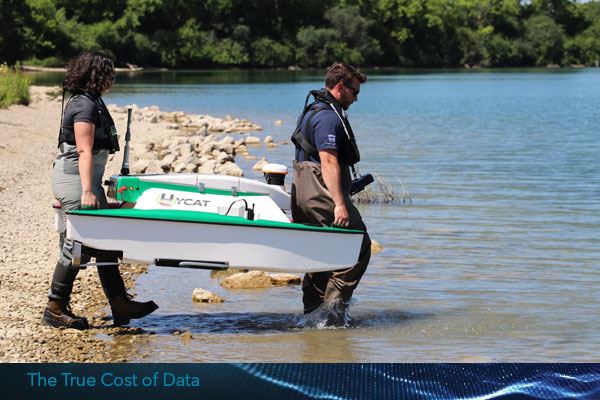
Your Bottom Line is Data!
When you are trying to make the most of your annual budget to meet your data objectives, you will be thankful that you thought of all the possible expenses in your monitoring plan. As you strive to have the biggest possible impact on the water you protect, consider partnering with the YSI Services team for logistical support and technical guidance to simplify your process.
